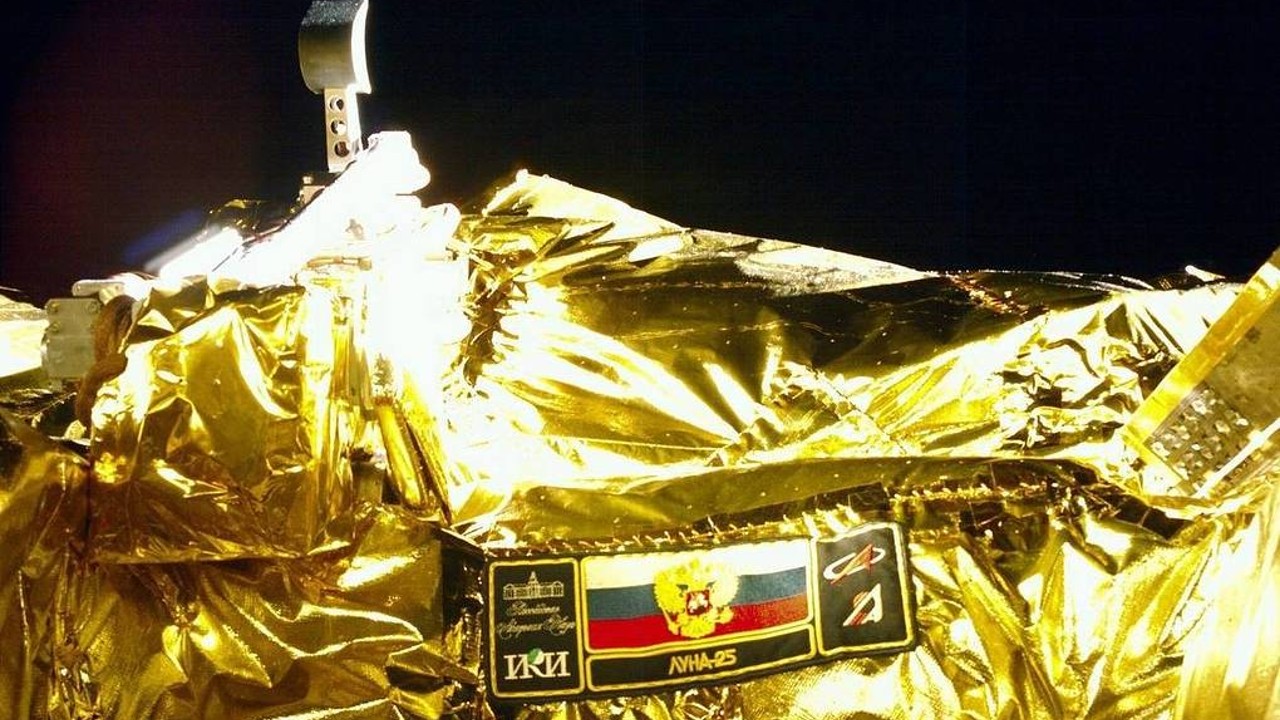Russia's Luna-25 moon lander suffers 'emergency situation' in lunar orbit

Update for Aug. 20: Russia's space agency Roscosmos has reported that the Luna-25 lunar lander has crashed into the moon.
Russia's first moon mission in nearly half a century may be in serious trouble.
The Luna-25 spacecraft was supposed to maneuver itself into its final pre-landing orbit around the moon today (Aug. 19), ahead of a touchdown attempt on Monday (Aug. 21) or thereabouts. But the probe encountered a problem during the engine burn.
"During the operation, an emergency situation occurred on board the automatic station, which did not allow the maneuver to be performed with the specified parameters," Russia's space agency Roscosmos wrote in an update on Telegram today (in Russian; translation by Google). "The management team is currently analyzing the situation."
Related: Not just Artemis: China and Russia plan to put boots on the moon, too
That's all we have to go on at the moment. But, as is often the case, speculation has filled the information vacuum.
"Russian internet is now filled with rumors/failure scenarios, and most of them assume that Luna-Glob (#Luna25) was lost. One argument is — had the problem been not fatal, Roscosmos would simply never mention it! ;)" Anatoly Zak of RussianSpaceWeb.com wrote on X (formerly Twitter) today.
Breaking space news, the latest updates on rocket launches, skywatching events and more!
If Luna-25 is indeed dead, it would be quite a blow to Russia's space program. Luna-25 is the first moon mission developed by modern Russia, and the first for it or its forerunner state, the Soviet Union, since Luna-24 in 1976.
Luna-25 launched on Aug. 10 and reached lunar orbit six days later. It's supposed to touch down near the moon's south pole, perhaps as early as Monday.
The lander carriers eight different science instruments. If it does bounce back from today's glitch, Luna-25 will use that gear to hunt for water ice and perform a variety of investigations in the exotic south polar region, which has not hosted a lander or a rover to date.

Michael Wall is a Senior Space Writer with Space.com and joined the team in 2010. He primarily covers exoplanets, spaceflight and military space, but has been known to dabble in the space art beat. His book about the search for alien life, "Out There," was published on Nov. 13, 2018. Before becoming a science writer, Michael worked as a herpetologist and wildlife biologist. He has a Ph.D. in evolutionary biology from the University of Sydney, Australia, a bachelor's degree from the University of Arizona, and a graduate certificate in science writing from the University of California, Santa Cruz. To find out what his latest project is, you can follow Michael on Twitter.

